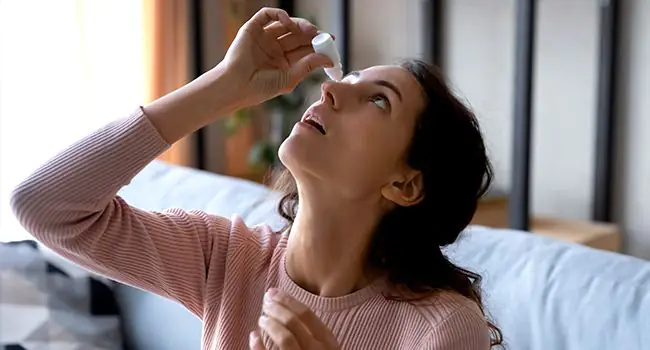Have allergies made your eyes swollen and red? You’re not alone; allergic conjunctivitis affects people of all ages. However, knowing your triggers and treating the symptoms of eye allergies is essential for future treatment.
Symptoms of Eye Allergies
Redness in the white area of your eye or the inner eyelid is one of the many symptoms of eye allergies. Besides that, itching, weeping, impaired vision, a burning sensation, swollen eyelids, and light sensitivity are among more warning indicators. Eye allergies can either occur alone or with nasal allergies & eczema, an allergic skin disorder. Consulting your eye doctor is the only way to know if it’s an eye allergy.
Causes of Eye Allergies
Eye allergies, like all allergies, are caused by your body’s overreaction to some external factors. Antibodies produced by your immune system cause histamine and other chemicals released into your eyes. Itching and red, watery eyes develop as a consequence of this.
Types of Eye Allergies
However, there are various eye allergies types; out of those, seasonal or perennial allergic conjunctivitis, vernal keratoconjunctivitis, atopic keratoconjunctivitis, contact allergic conjunctivitis, and giant papillary conjunctivitis are the most popular types.
1) Seasonal or Perennial Allergic Conjunctivitis
Depending on the type of plant pollen in the air, eye allergies symptoms appear in the spring, summer, or fall. Itching, burning, redness, puffy eyelids, and watery discharge are common symptoms, often accompanied by a runny nose, sneezing, nasal congestion, and other hay fever symptoms.
2) Vernal keratoconjunctivitis
It can happen at any time of year, but symptoms may be more severe during seasonal periods. Young men & boys are the most susceptible to this sort of eye allergy. If not appropriately treated, vernal keratoconjunctivitis might cause long-term vision problems.
3) Atopic keratoconjunctivitis
The majority of patients with this type of eye allergy are older men with a history of allergic dermatitis. The symptoms of eye allergies are similar to those of vernal keratoconjunctivitis, including acute itching, burning sensations, redness, and substantial production of thick mucus, which can cause the eyelids to lock together after sleeping.
If left untreated, atopic keratoconjunctivitis can cause scarring of the cornea and its fragile membrane.
4) Contact allergic conjunctivitis
This eye allergy can be caused by contact lens discomfort or proteins from tears that bond to the lens surface.
5) Giant papillary conjunctivitis
It is a severe type of contact allergic conjunctivitis in which individual fluid sacs grow in the upper lining of the inner eyelid. It is linked to the use of contact lenses.
Treatment of Eye Allergies
When home remedies are ineffective in treating eye allergies, it’s best for you to consult an ophthalmologist.
Below are some of the most common treatment options for eye allergies:
- When used as directed by an ophthalmologist, anti-inflammatory eye drops help to lessen inflammation in the eyes.
- Histamine release is the cause of eye allergies. Antihistamine drops, whether prescribed or over the-counter, can help lessen the effects of histamine.
- Olopatadine hydrochloride eye drops are used to treat redness and itching in the eyes.
- Low-potency steroid eye drops, such as loteprednol and fluorometholone, are beneficial in treating severe eye allergies. These eye drops help to minimize swelling and boost the body’s immune system. Before using steroid eye drops, you should visit an eye doctor.
Why Centre for Sight?
After all, the Centre for Sight is one of the country’s most highly advanced eye hospitals. It has a diverse group of health professionals who specialise in various eye treatments. When it comes to complicated, high-precision operations, CFS has a proven track record of success.
Article: How to Alleviate Eye Allergies – Centre for Sight
Author: CFS Editorial Team | Dec 20 2021 | UPDATED 08:00 IST
*The views expressed here are solely those of the author in his privatecapacity and do not in any way represent the views of Centre for Sight.





